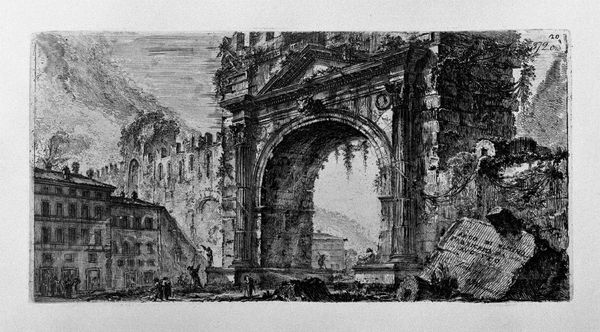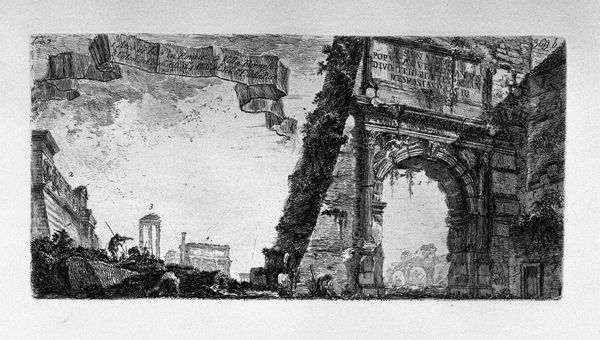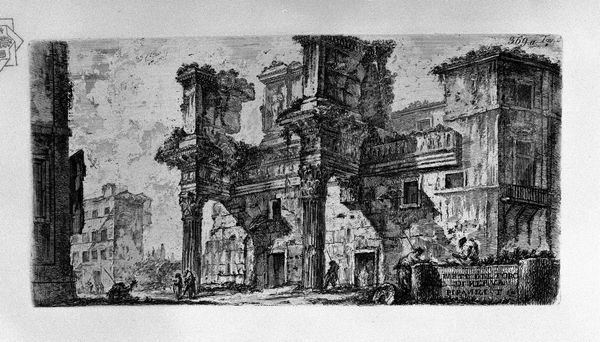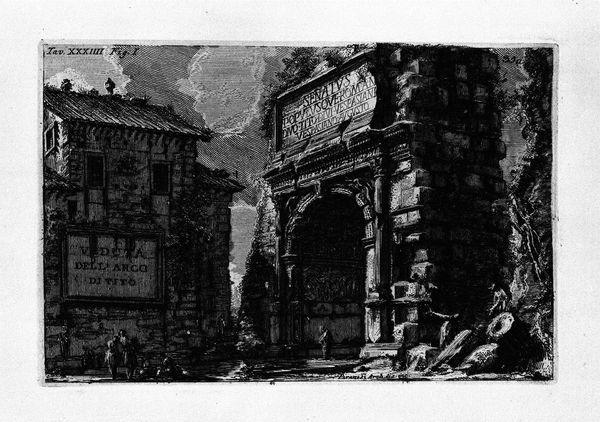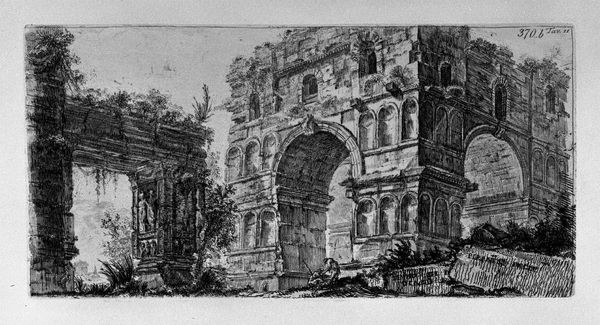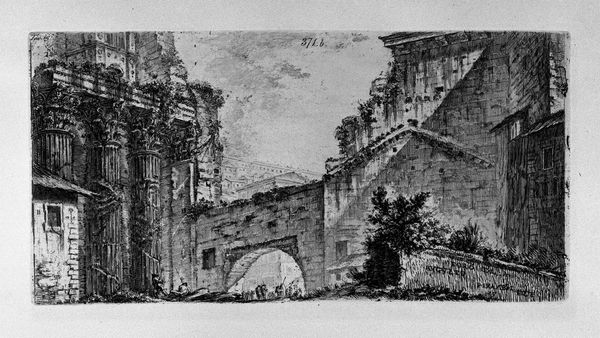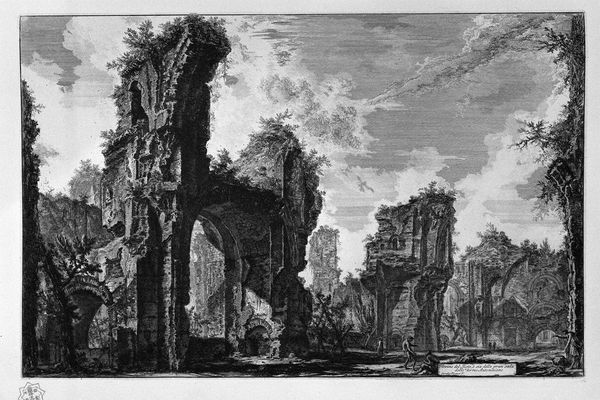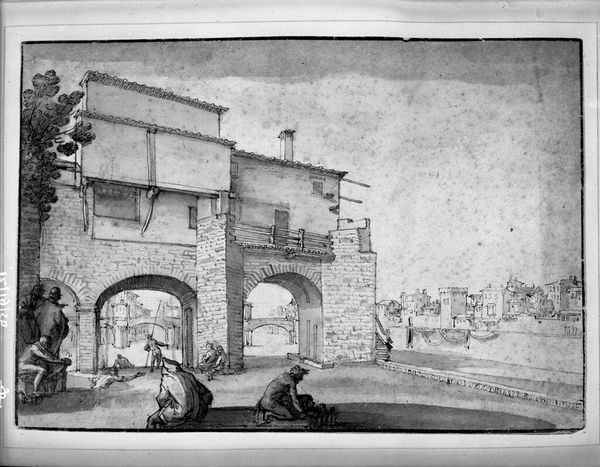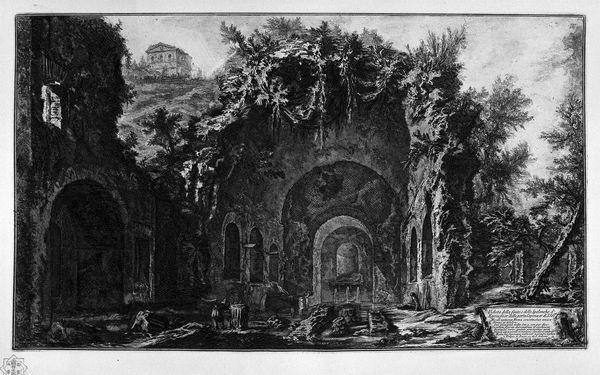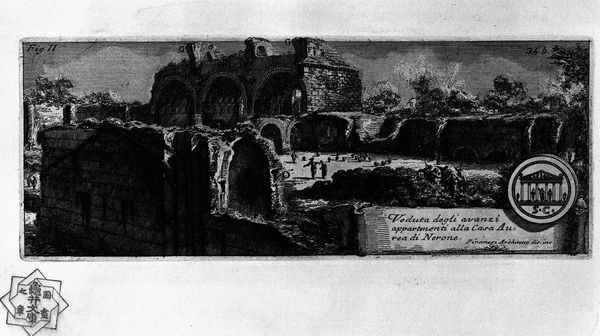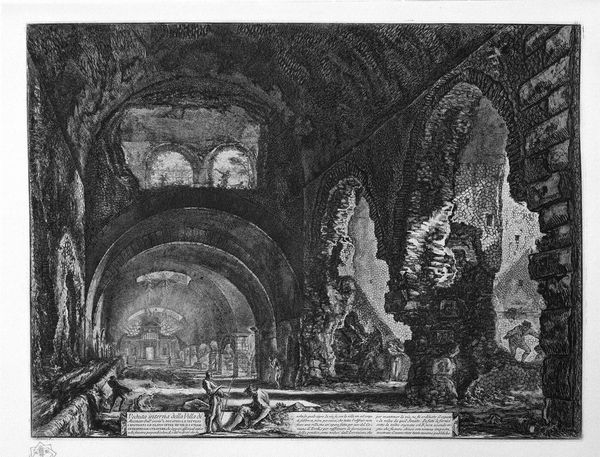
drawing, print, etching, ink, graphite, engraving, architecture
#
pencil drawn
#
drawing
#
neoclassicism
# print
#
etching
#
pencil sketch
#
landscape
#
classical-realism
#
charcoal drawing
#
ink
#
pencil drawing
#
column
#
romanticism
#
arch
#
graphite
#
charcoal
#
graphite
#
engraving
#
architecture
Copyright: Public domain
Editor: This is Giovanni Battista Piranesi's "Forum of Augustus", likely an etching or engraving. There's something about the ruins that feels both grand and melancholy. How would you interpret the layers of history depicted in this print? Curator: Piranesi was fascinated by the spectacle of Rome, not just its past glory but how it was consumed and understood in his own time. This work participates in a public discourse about the role of Rome as the center of power and civilization. How does he use the print medium itself to shape that understanding? Editor: The detail, I suppose? It's incredibly intricate, making it seem almost photographic. The archway, the crumbling stone, it all feels so real. Does this attention to detail contribute to a particular narrative? Curator: Exactly! Think about who would have bought these prints: tourists, wealthy Europeans on the Grand Tour, intellectuals eager to connect with the classical world. Piranesi’s detailed, dramatic renderings contributed to the perception of Rome as both a repository of ancient knowledge and a picturesque, decaying cityscape ready for exploration – and perhaps, even exploitation. Do you see a tension there? Editor: Yes, definitely! A romantic vision of the past being consumed in the present. Like the figures milling about are almost scavenging within these majestic remains. It's quite poignant. Curator: And it underscores the evolving public function of such images: shaping perceptions, fueling travel, and even influencing architectural trends across Europe. Considering the historical context reveals how seemingly straightforward depictions of ruins carry significant cultural and political weight. What has resonated with you the most? Editor: Seeing the ruins not just as remnants, but as actively shaping cultural identity in Piranesi's time... fascinating. Curator: Precisely. It reminds us that art always participates in a dialogue with its viewers and its moment, not just the past it represents.
Comments
No comments
Be the first to comment and join the conversation on the ultimate creative platform.
